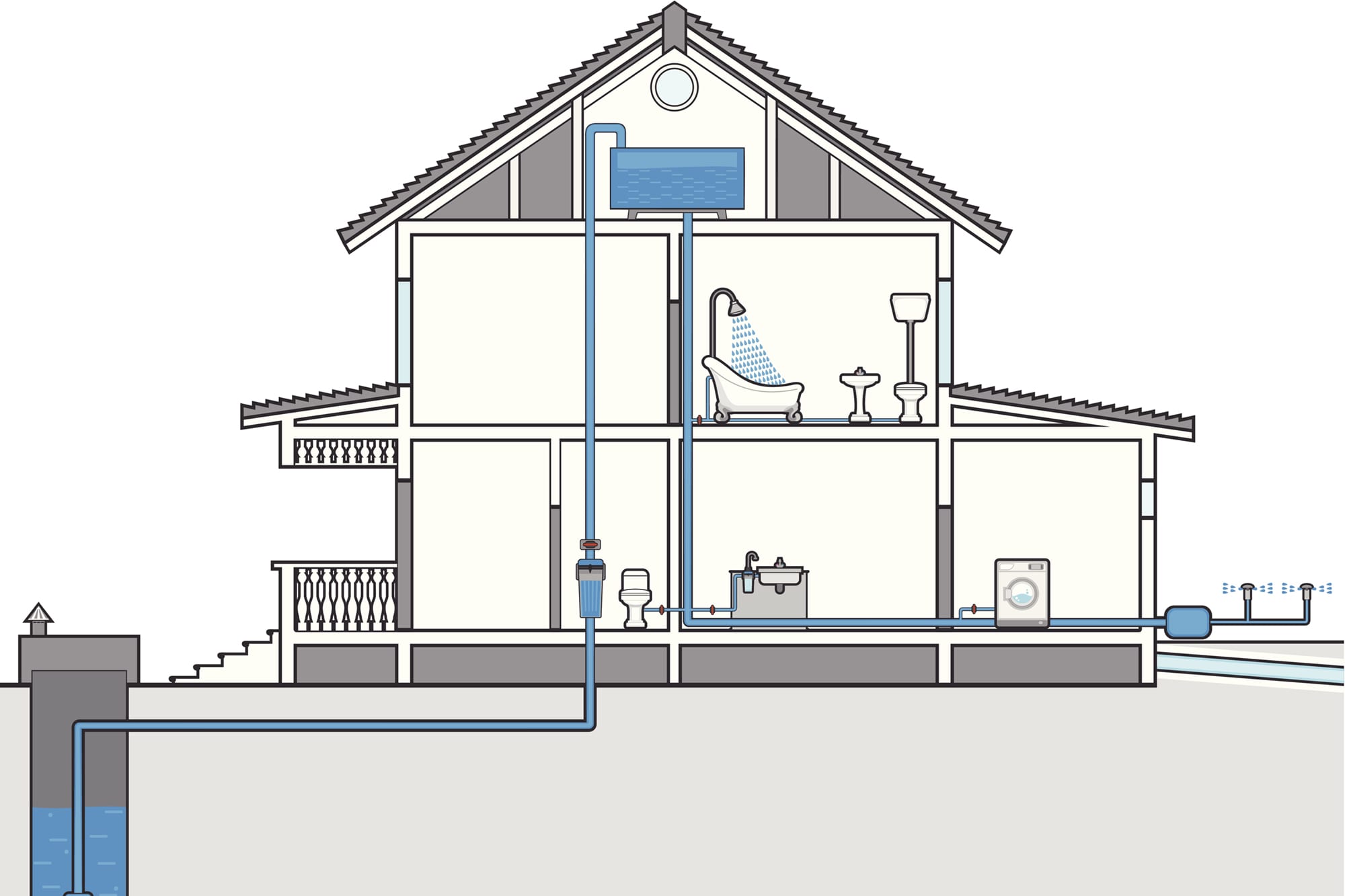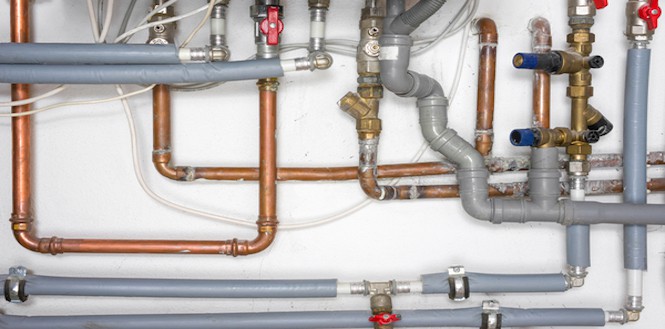The Layout of Your House's Plumbing System Explained
The Layout of Your House's Plumbing System Explained
Blog Article
The content listed below in relation to The Inner Workings of Your Home's Plumbing is highly engaging. You should see for yourself.

Understanding exactly how your home's pipes system works is necessary for each home owner. From providing clean water for drinking, cooking, and showering to securely getting rid of wastewater, a properly maintained plumbing system is vital for your family members's wellness and convenience. In this extensive overview, we'll explore the complex network that comprises your home's plumbing and offer pointers on maintenance, upgrades, and dealing with typical concerns.
Intro
Your home's plumbing system is more than just a network of pipes; it's a complex system that ensures you have access to clean water and effective wastewater elimination. Recognizing its parts and how they interact can assist you protect against costly repair work and make sure every little thing runs efficiently.
Standard Elements of a Pipes System
Pipes and Tubing
At the heart of your pipes system are the pipelines and tubes that lug water throughout your home. These can be made from various products such as copper, PVC, or PEX, each with its benefits in terms of sturdiness and cost-effectiveness.
Components: Sinks, Toilets, Showers, and so on.
Fixtures like sinks, bathrooms, showers, and bath tubs are where water is used in your home. Understanding how these fixtures attach to the plumbing system helps in identifying issues and planning upgrades.
Shutoffs and Shut-off Factors
Valves control the circulation of water in your pipes system. Shut-off shutoffs are important during emergencies or when you need to make repairs, allowing you to separate parts of the system without interfering with water circulation to the whole home.
Water System System
Main Water Line
The primary water line links your home to the community water supply or a private well. It's where water enters your home and is dispersed to various fixtures.
Water Meter and Pressure Regulatory Authority
The water meter actions your water usage, while a stress regulator guarantees that water flows at a secure pressure throughout your home's plumbing system, avoiding damage to pipes and components.
Cold Water vs. Warm water Lines
Comprehending the distinction in between cold water lines, which provide water directly from the major, and warm water lines, which lug heated water from the water heater, helps in repairing and planning for upgrades.
Water drainage System
Drain Pipes and Traps
Drain pipes lug wastewater away from sinks, showers, and commodes to the drain or septic system. Traps prevent sewage system gases from entering your home and additionally trap particles that might cause obstructions.
Ventilation Pipelines
Air flow pipes permit air into the water drainage system, protecting against suction that can slow water drainage and trigger catches to empty. Appropriate air flow is vital for keeping the stability of your pipes system.
Significance of Appropriate Water Drainage
Making sure correct drain prevents backups and water damage. Regularly cleaning up drains pipes and keeping traps can stop pricey repairs and prolong the life of your plumbing system.
Water Heater
Types of Water Heaters
Hot water heater can be tankless or traditional tank-style. Tankless heating units warm water on demand, while tanks keep warmed water for prompt use.
Updating Your Pipes System
Reasons for Upgrading
Upgrading to water-efficient fixtures or replacing old pipelines can boost water quality, decrease water expenses, and boost the worth of your home.
Modern Pipes Technologies and Their Benefits
Check out innovations like smart leakage detectors, water-saving commodes, and energy-efficient hot water heater that can save cash and lower ecological influence.
Cost Considerations and ROI
Calculate the ahead of time costs versus lasting savings when considering pipes upgrades. Lots of upgrades pay for themselves through lowered energy bills and less repair work.
How Water Heaters Link to the Pipes System
Comprehending exactly how hot water heater attach to both the cold water supply and warm water circulation lines aids in detecting concerns like not enough warm water or leakages.
Upkeep Tips for Water Heaters
Consistently flushing your water heater to eliminate sediment, checking the temperature setups, and inspecting for leakages can extend its lifespan and boost power effectiveness.
Typical Plumbing Issues
Leakages and Their Causes
Leakages can occur because of aging pipelines, loosened fittings, or high water stress. Resolving leakages immediately avoids water damage and mold and mildew development.
Blockages and Obstructions
Blockages in drains and commodes are usually triggered by flushing non-flushable items or a buildup of grease and hair. Making use of drainpipe screens and bearing in mind what drops your drains can prevent obstructions.
Indicators of Pipes Issues to Watch For
Low tide pressure, slow drains pipes, foul odors, or abnormally high water expenses are indicators of prospective plumbing troubles that must be dealt with promptly.
Plumbing Upkeep Tips
Regular Examinations and Checks
Arrange annual pipes inspections to capture problems early. Look for indications of leaks, deterioration, or mineral accumulation in faucets and showerheads.
Do It Yourself Upkeep Tasks
Straightforward jobs like cleaning tap aerators, looking for toilet leakages utilizing dye tablet computers, or insulating revealed pipes in cool climates can protect against major plumbing problems.
When to Call a Specialist Plumbing Technician
Know when a plumbing problem requires expert proficiency. Trying complicated fixings without proper understanding can lead to more damages and higher repair service prices.
Tips for Decreasing Water Use
Basic habits like repairing leakages immediately, taking much shorter showers, and running full tons of washing and recipes can conserve water and lower your energy bills.
Eco-Friendly Pipes Options
Take into consideration sustainable plumbing products like bamboo for floor covering, which is durable and environmentally friendly, or recycled glass for kitchen counters.
Emergency Readiness
Actions to Take Throughout a Pipes Emergency
Know where your shut-off valves are located and just how to turn off the supply of water in case of a ruptured pipeline or significant leakage.
Importance of Having Emergency Calls Handy
Keep get in touch with info for regional plumbing professionals or emergency services conveniently offered for fast response during a plumbing crisis.
Environmental Effect and Preservation
Water-Saving Components and Appliances
Installing low-flow faucets, showerheads, and bathrooms can substantially minimize water use without giving up performance.
Do It Yourself Emergency Situation Fixes (When Applicable).
Temporary fixes like using air duct tape to patch a leaking pipeline or positioning a pail under a trickling tap can lessen damages till an expert plumbing professional arrives.
Conclusion.
Understanding the anatomy of your home's pipes system encourages you to keep it properly, conserving time and money on repair work. By complying with regular maintenance routines and remaining notified regarding modern pipes modern technologies, you can guarantee your plumbing system runs efficiently for several years ahead.
The Anatomy of Your Home s Plumbing System
Understanding the anatomy of your home s plumbing system is essential for any homeowner. It not only helps in identifying potential issues but also facilitates effective communication with professionals when repairs or upgrades are needed. Your home s plumbing system is more than just pipes and faucets; it s a complex network that ensures the efficient and hygienic flow of water in and out of your house. In this blog, we ll dissect the crucial components of your home s plumbing system. For those in Antelope Valley, Brock Plumbing is your trusted partner for all your plumbing needs, ensuring your system functions smoothly and efficiently.
Water Supply System
Main Water Line: This is where your home s plumbing system begins. The main water line connects your home to the public water supply or a private well. Pipes and Shut-off Valves: Pipes distribute water throughout your home. Shut-off valves are crucial for controlling the flow of water and making repairs without shutting off the entire system. Drainage System
Drain Pipes: These pipes carry waste and water away from sinks, toilets, and showers. Vents: Vents allow sewer gases to escape and help maintain proper pressure in the drainage pipes, ensuring efficient flow of wastewater. Traps: Every fixture has a trap, a U-shaped pipe that holds water and prevents sewer gases from entering your home. The most common is the P-trap under sinks. Fixtures and Appliances
Fixtures and appliances are the most interacted with parts of your plumbing system. They include sinks, toilets, showers, dishwashers, and washing machines. Each fixture and appliance has its own supply and drainage connection, ensuring they receive clean water and can dispose of wastewater effectively.
Water Heating System
Your water heater is a crucial component, providing hot water to various fixtures and appliances in your home. It can be tank-based or tankless, with each type having its own set of advantages and maintenance requirements. Regular maintenance is essential to ensure efficient operation and extend the lifespan of the unit.
Sump Pump
In areas prone to flooding or with high water tables, a sump pump is an essential part of the plumbing system. It s installed in the lowest part of your basement or crawlspace and pumps out water that accumulates, preventing flooding and protecting your home from water damage.
Septic System
Homes that are not connected to a municipal sewer system have a septic system and an underground wastewater treatment structure. Understanding how to maintain your septic system is crucial to prevent backups, odors, and early system failure.
Conclusion
Your home s plumbing system is a complex and essential network, ensuring the efficient and hygienic flow of water in and out of your property. Understanding its key components helps in maintaining it properly and identifying issues before they escalate into major problems. For residents in Antelope Valley, Brock Plumbing is dedicated to providing top-notch services, ensuring that every part of your plumbing system is in perfect working order. Trust our team of professionals to handle all your plumbing needs, ensuring your home remains comfortable, safe, and well-maintained.
https://brockplumbinganddrains.com/blog/the-anatomy-of-your-homes-plumbing-system/

I stumbled upon that write up about Understanding Your Home's Plumbing Anatomy while scouting around the internet. For those who enjoyed our blog post please don't forget to share it. I truly appreciate your readership.
Book Instantly Report this page